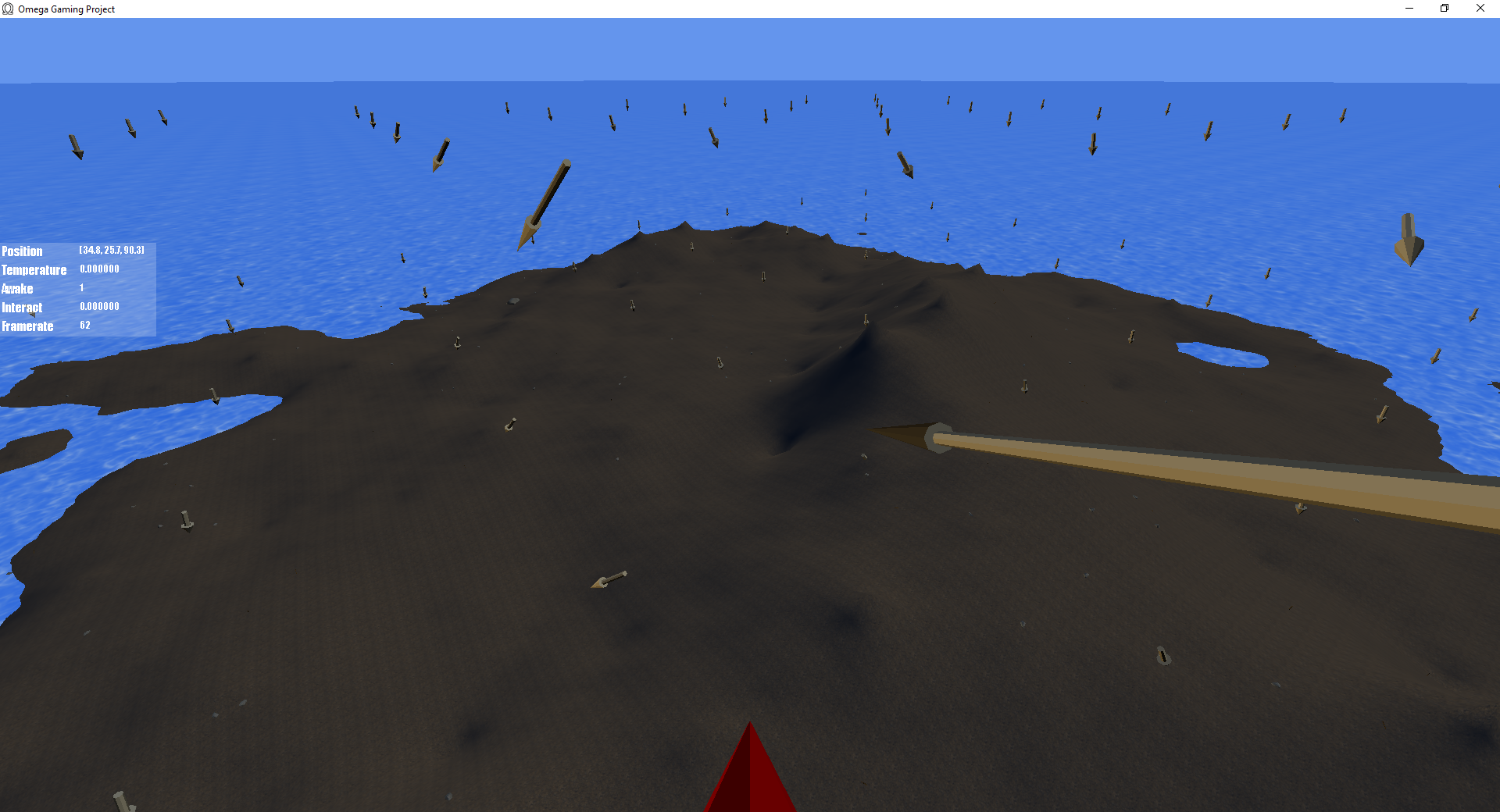Report: OGP Weather Simulation
Weather Simulation in OGP
Omega Gaming Project Overview
The Omega Gaming Project (OGP) provides many domains to work in, especially those suited for 3D graphics and simulation. As such, the developments in this report vary widely and are in no way representative of a final version of the project.
Weather Simulation
Since OGP aims to provide many physically based simulation systems, it makes sense to introduce a way of handling atmospheric attributes like pressure, temperature, humidity, and wind. To accomplish these tasks, I first prototyped several of my own ideas, then conducted research into fluid simulations that model Navier–Stokes equations. The following sections cover my progression through implementing various fluid simulation techniques in JavaScript.
Elastic Particles
I implemented an initial approach of representing atmosphere volumes as large elastic particles that need only repulse eachother to give the effect of gravity induced pressure and temperature. Unfortunately, this approach leads to rigid crystalline configurations under high pressure - this can be seen at the bottom of Figure 1.
Figure 1: A 2D profile of an atmosphere represented by elastic particles
Conservative Semi-Lagrangian Advection Research
Looking for a continuous solution to the problem of representing air movement, I read and implemented the advection scheme presented in this paper:
An Unconditionally Stable Fully Conservative Semi-Lagrangian Method (2010) by Michael Lentine∗ , J´on T´omas Gr´etarsson∗ , Ronald Fedkiw∗ http://physbam.stanford.edu/~fedkiw/papers/stanford2010-01.pdf
Figure 2: Conservative advection of air through a constant velocity field
I then implemented incompressible fluid pressure equations, however I could not solve stability issues in my implementation - these can be seen as “checkerboard” patterns in Figure 3., where pressure quantities are oscillating at a high frequency.
Figure 3: Introducing pressure at various locations
Another Approach to Solving the Navier–Stokes Equations
Once again, looking for simple and well-written literature, I came across the following paper:
Cline, David & Cardon, David & Egbert, Parris. (2020). Fluid flow for the rest of us: Tutorial of the marker and cell method in computer graphics. https://www.researchgate.net/publication/228964362_Fluid_flow_for_the_rest_of_us_Tutorial_of_the_marker_and_cell_method_in_computer_graphics.
Implementing this paper required solving large sparse matrix equations in the form Ax=b. I used the math.js JavaScript library for this task. The end result of my implementation can be seen in Figure 4., where I introduce an artificial upward force into the velocity field. The matrix solver is attempting to satisfy the condition of zero divergence, this means velocities must be adjusted so there are no regions where air is created or destroyed–this is also what gives rise to the vortices.
Figure 4: Particles (blue) are advected according to the velocity field (white lines), with pressure visualized as red
Advancing my goals for representing atmospheric phenomena (e.g., like the buoyancy of warm air), I introduced a temperature quantity that advects according to the velocity field, but also generates a slight buoyant force on the velocity field when there is a sufficient temperature gradient. This is shown in Figure 5.
Figure 5: Warm air rising and carrying particles with it
Transferring to the 3D Environment of OGP
Taking what I learned from the prototyping phase to the final 3D representation in the OGP engine was quite straightforward thanks to the generalizations used in the original paper. The simulation is stable in 3 dimensions and responds to external forces like those being introduced in Figure 6. Since the engine is written in C++, I opted to use the highly regarded Eigen matrix library for solving the very large matrices involved.

Figure 6: Velocity field visualized in the 3D environment of OGP
Future Work
With my new understanding of the equations at play, I will continue improving the functionality of this atmosphere system. Future improvements include: the addition of humidity generated by standing water, precipitation generated by condensing humidity, and heating of the air from the ground.